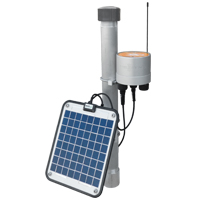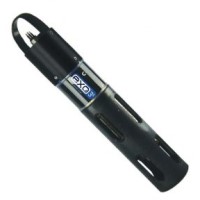
 In southwest Kentucky, the town of Smithland isn’t home to many people. Its population as of 2020 fell just shy of 250, according to the U.S. Census Bureau. Nevertheless, it is the namesake of a prominent dam operated by the U.S. Army Corps of Engineers along the Ohio River: Smithland Locks and Dam.
In southwest Kentucky, the town of Smithland isn’t home to many people. Its population as of 2020 fell just shy of 250, according to the U.S. Census Bureau. Nevertheless, it is the namesake of a prominent dam operated by the U.S. Army Corps of Engineers along the Ohio River: Smithland Locks and Dam.
Since its construction in the 1970’s, the Army Corps has used the dam as a portal for barge and shipping traffic up and down the Ohio River. In 2010, the Corps helped to support a new purpose for the dam proposed by American Municipal Power, Inc. (AMP). The energy company broke ground on a new hydropower installation at Smithland in that year, and construction continued until it reached full commercial operation in August 2017.
One focus area of the project was how to get to the point of operation with minimal environmental impact. This required a solid understanding of how the Ohio River’s temperature and dissolved oxygen levels, two parameters important for the survival of aquatic life, behaved naturally before the presence of the hydropower plant.
This means that even before breaking ground on construction, AMP managers needed to track dissolved oxygen and water temperature levels to build a long-term dataset for comparison to data gathered in the future. AMP officials worked with NexSens Technology to source the equipment needed for monitoring, including data loggers, sensors and web datacenter services.
Augmented data for Ohio River hydropower dams
 To keep tabs on conditions around the dam, AMP officials invested in two NexSens 3100-MAST Data Loggers. Each is powered by solar panels and equipped with cellular telemetry for wireless data transmission to operators at the dam as measurements come in. Although the X2 Data Logger has replaced the 3100-MAST system, the original units are still in operation as of 2023.
To keep tabs on conditions around the dam, AMP officials invested in two NexSens 3100-MAST Data Loggers. Each is powered by solar panels and equipped with cellular telemetry for wireless data transmission to operators at the dam as measurements come in. Although the X2 Data Logger has replaced the 3100-MAST system, the original units are still in operation as of 2023.
One logger is deployed upstream of the Smithland Locks and Dam, while the other is deployed downstream of the dam. The mast-mounted loggers each have a protective deployment pipe that scales the wall of the dam structure to reach a point below minimum water level in the river. Securely housed inside the pipe and connected to the data logger is a YSI Optical Dissolved Oxygen Sensor. The sensor’s optical technology improves performance and reduces maintenance, with integrated thermistor to track river temperatures in addition to DO. It also stores calibration data internally so that technicians can easily calibrate the probe using field computers during maintenance visits.
Taken together, the two loggers send measurement data in real time via 4G LTE cellular telemetry. Project managers view data via a secure, private WQData LIVE web datacenter portal, available from anywhere with an Internet connection.
Smithland Hydroelectric Plant Quick Facts
Original dam construction: 1971-1980
Hydroelectric plant construction: 2010-2017
Rated capacity: 76 MW
Annual output: 379 million kWh
Power recipients: 79 member communities in five states
Top image: Courtesy of American Municipal Power
The NexSens X2 Environmental Data Logger offers the latest in real-time monitoring technology with wireless communication, large plug-and-play sensor library, and ultra-low power consumption.
The MAST is a 2″ NPT aluminum pipe assembly for mounting an X2 data logger and SP-Series solar power pack for quick deployment.
The YSI EXO3s is a compact, batteryless sonde for monitoring major water quality parameters, including: pH, conductivity, temperature, turbidity and dissolved oxygen.
WQData LIVE is a web-based project management service that allows users 24/7 instant access to data collected from remote telemetry systems.




